Nestled in a jewel of a valley in New Zealand, I find myself far removed from the troubles of the world. It’s no wonder this place has become a magnet for wealthy preppers, drawn from across the globe to build their hideaways. There’s a certain irony in seeking refuge at the “bottom” of a globe some don’t believe in, but that’s a story for another day.
My old friend has remarried, and his new wife is lovely. But when I was introduced to her as a “Flat Earther,” I thought it was a joke. As I got to know her better, it became evident that not only does she genuinely believe the Earth is flat, but she’s also what you might call a conspiracy addict. If there’s a conspiracy theory out there, you can bet she’s on board with it.
At first, I found it all rather amusing. Harmless fun, right? But as I started searching for flat Earth content on YouTube out of curiosity, I quickly realized the algorithm thought it had me pegged. Suddenly, my feed was flooded with “alternative thinkers” and “free thinkers” who claim the world is making it all up.
And that’s where the danger lies. Embracing a paradigm simply because it goes against the mainstream is no different from blindly accepting the mainstream narrative. We have to question every theory, alternative or not. How does it work? Why would this be true? What’s the agenda behind it? It’s crucial to treat alternative theories with the same skepticism we apply to mainstream ideas.
As a yacht skipper for many years, I’ve seen firsthand evidence that contradicts these flat Earth theories. The charts we use aren’t fake, radar isn’t a grand conspiracy, and the horizon is only about 3 miles from a yacht . You can literally watch other yachts dip below or appear from beyond the curve of the Earth.
The distance to the horizon from a yacht or any observer depends on the height of their eyes above sea level:
- Height of Eye: If your height of eye is approximately 3 feet (about 1 meter), the horizon is roughly 2.9 miles away. If your height of eye is around 6 feet (about 1.8 meters), the horizon extends to about 3.1 miles. For a height of 10 feet, it would be about 3.7 miles.
- Visibility at Sea: On a clear day, an average person can see up to about 4.5 kilometers (approximately 2.8 miles) at sea level, depending on atmospheric conditions and the height of the object being viewed.
- Curvature Effects: As objects move away from you on the water, they begin to disappear from the bottom up due to Earth’s curvature. This phenomenon can be observed with ships as they sail away.
- Radar and Navigation: The curvature of the Earth also affects radar and navigation systems, which account for this curvature when determining distances and positions.

During a race from Cape Town to Bahia in Brazil, we were stalked by pirates for days in the South Atlantic Sea. The owner of the yacht we were racing was a wealthy oil dealer from Kazakhstan, and he was understandably worried. The pirates’ tactic was to keep their ship just below the horizon, monitoring their prey. At night, they would launch fast rubber boats, appearing out of the darkness.
Although they were nowhere to be seen with the naked eye, we know they were just a few miles away. We could see exactly where they were on our radar. We knew that as they came towards us we would see the ship’s bridge poke its head up on the horizon and then slip away like a mad Max Gofer. At night, we would sit in wait with flares ready to repel them if they attacked. If the Earth were flat, this cat-and-mouse game simply wouldn’t have been possible.
So, let’s set the record straight: the Earth is, in fact, round. Well, almost round – it’s slightly pear-shaped and bulges a bit at the equator, but that’s a far cry from being flat.
The Ancient Roots of Flat Earth Belief
Believe it or not, the idea of a flat Earth is as old as civilization itself. Many ancient cultures, from the Babylonians to the early Egyptians, conceptualized the world as a flat disc. This made sense based on their everyday observations – after all, the ground beneath our feet does appear flat when we’re standing on it.
However, it’s crucial to note that even in ancient times, this wasn’t a universal belief. The ancient Greeks, for instance, had largely figured out that the Earth was spherical by around 500 BCE. Aristotle, writing in the 4th century BCE, provided several compelling arguments for a round Earth, including the circular shadow cast by Earth during a lunar eclipse.
By the time of Ptolemy in the 2nd century CE, the spherical Earth was the accepted model among educated people in the Western world. This understanding persisted through the Middle Ages, contrary to the popular myth that medieval people thought the Earth was flat.
The Modern Flat Earth Movement
So, if the idea of a spherical Earth has been around for over two millennia, how did we end up with a resurgence of flat Earth beliefs in the 21st century? The story is as fascinating as it is complex.
The modern flat Earth movement can trace its roots back to the 19th century. In 1849, Samuel Rowbotham published a pamphlet called “Zetetic Astronomy,” which argued for a flat Earth based on his observations of a canal in England. Rowbotham’s ideas gained some traction, leading to the formation of the Flat Earth Society in 1956 by Samuel Shenton.
However, it was really the advent of the internet and social media that breathed new life into flat Earth theories. The ability to easily share ideas, no matter how fringe, and to find like-minded individuals across the globe, created a perfect storm for the proliferation of these beliefs.
The YouTube Effect

As someone who’s spent a fair bit of time sailing the world’s oceans, I find the flat Earth concept particularly perplexing. I’ve seen ships disappear over the horizon bottom-first, watched the stars change as I’ve crossed the equator, and used celestial navigation techniques that only work on a spherical Earth.
But here’s the thing: once you start down the flat Earth rabbit hole on platforms like YouTube, the algorithm takes over. Suddenly, your feed is filled with videos claiming to “prove” the Earth is flat. It’s a digital echo chamber that can be hard to escape.
I experienced this firsthand when I started researching flat Earth theories out of curiosity after my conversation with my neighbor. Before I knew it, my YouTube recommendations were a sea of flat Earth content. It was eye-opening to see how easily one could be inundated with this information if they weren’t critically evaluating what they were watching.
The Psychology Behind Flat Earth Beliefs
Now, it would be easy to dismiss flat Earth believers as simply uninformed or uneducated. But in my experience, that’s often not the case. Many flat Earth proponents I’ve encountered are intelligent, articulate individuals who have simply come to a different conclusion about the shape of our planet.
So what’s going on here? From a Wealthness perspective, I believe it often comes down to a few key factors:
- Distrust in institutions: Many flat Earth believers have a deep-seated mistrust of government, scientific institutions, and mainstream media. This skepticism, while healthy in moderation, can lead to rejecting even well-established scientific facts.
- Desire for special knowledge: There’s a certain allure to believing you’ve uncovered a “truth” that the majority of people don’t know. It can provide a sense of belonging and importance.
- Confirmation bias: Once someone starts to believe in a flat Earth, they tend to seek out information that confirms their belief while dismissing contrary evidence.
- Community and identity: The flat Earth community can provide a strong sense of belonging and identity, which can be very appealing in our often disconnected modern world.
The New Level of Flat Earth Theories
In recent years, flat Earth theories have evolved to a whole new level of complexity. It’s not just about believing the Earth is flat anymore; it’s about constructing an entire alternative cosmology.
For instance, some flat Earth proponents now argue that the sun and moon are small, local objects circling above the flat Earth. They claim that gravity doesn’t exist and that objects fall due to density and buoyancy. There are elaborate explanations for everything from seasons to eclipses, all based on the premise of a flat Earth.
What’s particularly interesting is how these theories have incorporated elements of modern technology and scientific language. Flat Earth believers talk about “perspective” and “vanishing points” to explain why ships appear to sink below the horizon. They use terms like “firmament” to describe a supposed dome over the flat Earth.
There are even attempts to explain space exploration and satellite technology within a flat Earth framework. Some argue that satellites are actually high-altitude balloons or that space travel is impossible due to something called the “Van Allen radiation belts.”
The Dangers of Uncritical Thinking
While it’s easy to smile at some of these ideas, I believe the rise of flat Earth beliefs points to a more serious issue: a growing distrust in science and expert knowledge.
In the Wealthness philosophy, we emphasize the importance of critical thinking and balanced skepticism. It’s healthy to question things and not accept everything at face value. However, this questioning should be based on evidence and logical reasoning, not just contrarianism.
The danger comes when people reject well-established scientific facts in favor of unsubstantiated theories. This kind of thinking can lead to real-world consequences.
Moreover, the flat Earth movement demonstrates how easily misinformation can spread in the digital age. It’s a reminder of the importance of digital literacy and the ability to critically evaluate online content.
Finding Balance: The Wealthness Approach
So, how do we approach this issue from a Wealthness perspective? I believe it comes down to a few key principles:
- Cultivate critical thinking: Encourage questioning and skepticism, but also teach the importance of evidence-based reasoning.
- Promote scientific literacy: Understanding basic scientific principles can go a long way in helping people evaluate claims about the natural world.
- Foster open dialogue: Instead of dismissing flat Earth believers, engage in respectful dialogue. Understanding their perspective can provide insights into addressing the root causes of science skepticism.
- Emphasize the wonder of reality: The actual story of our planet – its formation, evolution, and place in the cosmos – is far more awe-inspiring than any flat Earth theory.
- Practice empathy: Remember that people come to these beliefs for complex reasons. Approaching the issue with empathy rather than ridicule is more likely to lead to productive conversations.
The Flat Earth and the Round World of Wealthness
As I wrap up this introduction to flat Earth theories, I’m reminded of a quote often attributed to Isaac Asimov:
“The saddest aspect of life right now is that science gathers knowledge faster than society gathers wisdom.”
In many ways, the resurgence of flat Earth beliefs is a symptom of this gap between knowledge and wisdom. We have more scientific information at our fingertips than ever before, yet many people feel disconnected from this knowledge, leading them to seek alternative explanations.
From a Wealthness perspective, our goal should be to bridge this gap. We need to foster a society where scientific literacy is widespread, critical thinking is valued, and people feel connected to the awe-inspiring reality of our world.
As for my neighbor who believes in a flat Earth? Well, we’re still friends. We have fascinating discussions where we challenge each other’s ideas. And who knows? Maybe one day I’ll convince her to join me looking up at the stars and accepting that Orion’s belt and the man in the moon are upside down because we live in the southern hemisphere.
In the end, whether you believe the Earth is flat or round, the principles of Wealthness remain the same. It’s about seeking truth, fostering understanding, and striving for balance in all aspects of life. And in that pursuit, we might just find that our world – in all its spherical glory – is far more wondrous than we ever imagined.
So, let’s embark on this journey across our spherical planet and debunk some of the most outlandish flat Earth claims. Buckle up – it’s going to be a round trip!
Satellites are actually hanging from helium balloons

This claim about satellites hanging from helium balloons is false and can be easily debunked:
- Satellite orbits: Satellites orbit the Earth at very high speeds (around 17,000 mph) and altitudes (hundreds to thousands of miles up). Helium balloons cannot reach these altitudes or velocities.
- Satellite tracking: Satellites can be tracked by amateur astronomers using telescopes. Their orbits and movements match what we’d expect from objects in space, not balloons.
- Satellite functionality: Many satellite functions (like GPS) rely on precise positioning and coverage that would be impossible with balloons.
- NASA’s helium use: While NASA does use significant amounts of helium, it’s primarily for rocket launches and other operations, not for suspending satellites. The claim about NASA being the largest helium consumer is also questionable – the medical and tech industries are major users as well.
- Number of satellites: There are thousands of satellites in orbit. It would be logistically impossible to maintain that many high-altitude balloons.
- Satellite imagery: Satellites provide images and data of Earth from perspectives impossible to achieve with balloons.
- Space debris: We can observe defunct satellites and space debris in orbit, which wouldn’t exist if satellites were balloons.
The idea of satellites being suspended by balloons is not scientifically plausible and contradicts extensive evidence and direct observations of satellites in orbit.
Using a level on a plane to show it’s not following Earth’s curve

This claim about using a level on a plane to show the Earth is flat can be easily debunked:
- Scale and sensitivity: The curvature of the Earth is so gradual that it’s imperceptible over short distances. A standard bubble level isn’t sensitive enough to detect the slight change in angle over the length of an aircraft.
- Aircraft dynamics: Planes don’t fly in a perfectly straight line parallel to the Earth’s surface. They constantly make minor adjustments for altitude, air pressure, and other factors.
- Altitude changes: As planes climb or descend, the angle relative to the Earth’s surface changes, which would affect a level reading regardless of the Earth’s shape.
- Gyroscopic systems: Modern aircraft use sophisticated gyroscopic systems to maintain their orientation relative to the Earth’s surface, not bubble levels.
- Misunderstanding of “level” flight: “Level” flight doesn’t mean parallel to the ground, but maintaining a constant altitude above sea level, which follows the Earth’s curvature.
- Atmospheric refraction: The atmosphere can bend light, creating an optical illusion of flatness even when flying over a curved surface.
- Confirmation bias: People looking for evidence of a flat Earth might misinterpret or overemphasize readings that seem to support their belief while ignoring contradictory evidence.
- Actual curvature measurements: Pilots and navigators do account for the Earth’s curvature in long-distance flights, which wouldn’t be necessary if the Earth were flat.
- Coriolis effect: The Coriolis effect, which influences the path of moving objects on a rotating sphere, is taken into account in long-range ballistics and weather patterns, proving Earth’s rotation and spherical shape.
In conclusion, using a bubble level on a plane is not a valid method to determine the Earth’s shape due to the scale of the curvature and the complexities of flight dynamics.
The curve of Earth cannot be seen from space
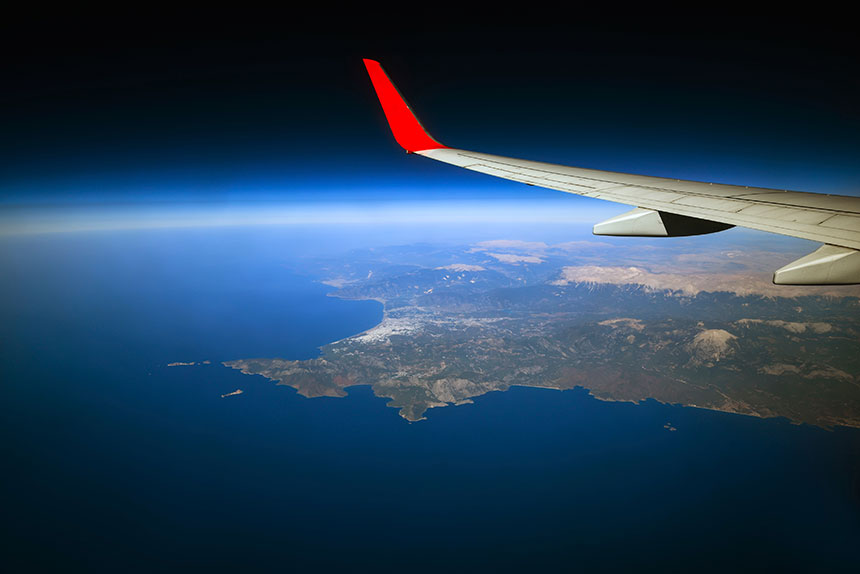
This claim that the curve of Earth cannot be seen from space is false and can be easily debunked:
- Photographic evidence: There are countless photographs and videos taken from space clearly showing Earth’s curvature. These come from various sources including NASA, other space agencies, private space companies, and even amateur high-altitude balloon launches.
- Astronaut testimonies: Numerous astronauts from different countries have personally witnessed and described seeing Earth’s curvature from space.
- Live feeds: The International Space Station (ISS) provides a continuous live feed of Earth from orbit, clearly showing its curved horizon.
- Partial views: Even from lower altitudes where the entire Earth isn’t visible, the curvature can still be seen in the horizon.
- Scientific understanding: Our knowledge of optics and the physics of large spherical bodies confirms that Earth’s curvature should be visible from space.
- Consistency with other observations: The visible curvature from space is consistent with other evidence of Earth’s shape, including observations from the ground and aircraft.
- No flat horizon: If Earth were flat, the horizon viewed from space would appear as a straight line, which it does not.
- Varying visibility: The degree of curvature visible changes depending on the altitude of observation, exactly as would be expected for a spherical Earth.
- Historical precedent: Even early space missions in the 1960s captured images showing Earth’s curvature.
- Independent verification: Multiple countries and private organizations have sent objects to space and captured images showing Earth’s curvature, making a global conspiracy to fake these images extremely implausible.
The claim that Earth’s curve cannot be seen from space contradicts a vast body of evidence and basic principles of geometry and optics. It’s a demonstrably false statement that ignores readily available proof to the contrary.
NASA photos are all faked
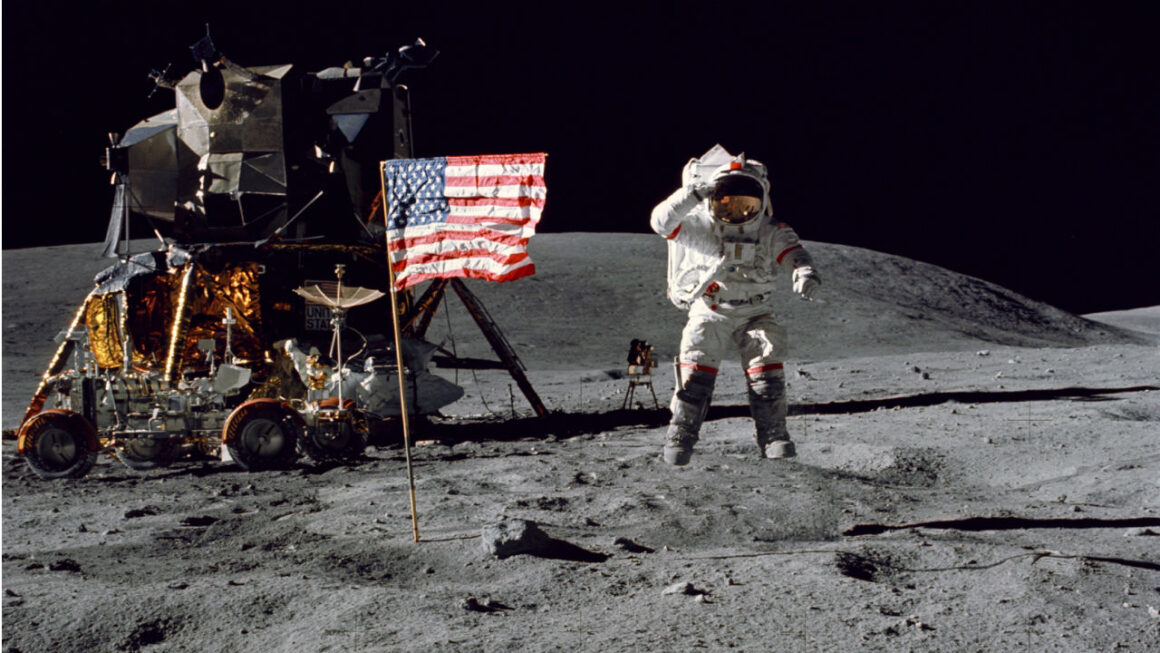
When it comes to the moon landings and NASA’s photographs, the truth might be more nuanced than either side of the debate typically admits. I had a great friend whose father worked on the Moon landings, and his insider perspective adds an intriguing layer to this controversy. According to him, while humans did indeed land on the moon, NASA was concerned about the quality of the photographs and the potential effects of radiation on the film. As a precaution, they created fake backup photos. This revelation suggests that while the moon landings were real, some of the iconic images we associate with them might have been staged or enhanced. It’s a reminder that even in our greatest achievements, there can be elements of showmanship and PR management.
The Apollo Moon landings were a pivotal moment in human history, representing not just a triumph of science and engineering, but a decisive victory for the United States in its Cold War space race with the Soviet Union. The missions were as much about geopolitical supremacy as they were about exploration, with billions of dollars invested and national prestige on the line. In this high-stakes game of technological one-upmanship, the importance of photographic evidence cannot be overstated.
Imagine the catastrophic scenario if, after all the effort and expense, there had been no compelling visual proof of the achievement. The photos and video footage from the Moon weren’t just souvenirs; they were vital documentation that validated the entire endeavor on the world stage.
This doesn’t negate the monumental accomplishment of the moon landings, but it does invite us to look at the photographic record with a more discerning eye.
Personally, I have questioned the validity of the first moon landing, especially when you take into account the incredibly high stakes but the conspiracy would have to extend far beyond that one mission.
The Apollo program, spanning from 1961 to 1972, was a monumental achievement in human history, culminating in six successful crewed lunar landings. Over this period, NASA conducted multiple missions, including Apollo 11, which famously saw Neil Armstrong and Buzz Aldrin take humanity’s first steps on the Moon.
During these missions, astronauts captured hundreds of hours of film and thousands of photographs, documenting their experiences and the lunar landscape in stunning detail. I would suggest that this extensive visual record serves as irrefutable evidence of humanity’s journey beyond our planet. The images taken on the lunar surface showcase not only the astronauts’ activities but also the unique characteristics of the Moon itself—its surface features, shadows, and even Earth rising in the background. Such a wealth of documentation makes it exceedingly difficult to sustain claims that these landings were faked; the sheer volume of credible evidence from various missions—including Apollo 8’s orbit around the Moon and Apollo 15’s use of a lunar rover—reinforces the authenticity of these historic events..
- Overwhelming evidence: There are thousands of photos from the Apollo missions, not just a few that could have been easily faked. The sheer volume of imagery, along with video footage, scientific data, and physical moon rocks, makes widespread fakery extremely implausible.
- Independent verification: Multiple countries and organizations have verified the moon landings, including those who were rivals of the US during the Space Race. The Soviet Union, which had the capability to track spacecraft, never disputed the landings.
- Modern confirmation: The Lunar Reconnaissance Orbiter has taken high-resolution images of the Apollo landing sites, showing the equipment left behind and even astronaut footprints.
- Technological limitations: The technology to fake the moon landing footage convincingly did not exist in the 1960s. Some of the visual effects seen in the footage, like dust behavior in low gravity, would have been impossible to recreate on Earth at that time.
- Consistent with lunar conditions: The photos show phenomena consistent with what we know about lunar conditions, such as the lack of atmospheric haze and stars being invisible due to the bright lunar surface.
- Scientific scrutiny: Moon rocks brought back by Apollo missions have been studied by scientists worldwide and confirmed to be of lunar origin.
- Eyewitness accounts: Thousands of NASA employees and contractors worked on the Apollo program. In over 50 years, no credible whistleblower has come forward to claim the photos were faked.
- Retroreflectors: Astronauts placed laser retroreflectors on the Moon’s surface, which are still used today for precise distance measurements.
The sky is blue because it’s the firmament

The term “firmament” has its roots in ancient cosmology, referring to a celestial barrier that separates the heavenly waters above from the Earth below. In various historical contexts, it has been depicted as a solid dome created by divine forces, often used to explain the structure of the universe in early religious texts. For example, in biblical cosmology, the firmament is described as a vast dome that divides the primal sea, allowing dry land to appear. This concept was prevalent in ancient Near Eastern thought and influenced many cultures, including the Greeks and Egyptians.
In modern discussions, particularly among flat Earth theorists, the firmament is often invoked to explain why they believe the sky appears blue and to assert that it acts as a barrier over a flat Earth. They argue that this dome-like structure holds water above it, which contributes to their belief that the sky is not just an expanse but a physical entity.
However, from a scientific perspective, this notion is fundamentally flawed. The blue color of the sky is explained by Rayleigh scattering, where shorter wavelengths of light (blue) are scattered more than longer wavelengths (red) as sunlight passes through the atmosphere. There is no physical barrier or water layer above us; rather, the atmosphere itself is composed of gases like nitrogen and oxygen.
Furthermore, advancements in astronomy have debunked the idea of a solid firmament. Observations from space clearly show that there is no dome or barrier encasing the Earth. The vastness of space extends far beyond our atmosphere, filled with celestial bodies and phenomena that contradict ancient models.
While the concept of the firmament has historical significance and cultural resonance, it does not hold up against modern scientific understanding. The sky’s blue color and the structure of our universe are explained through well-established scientific principles rather than outdated cosmological views.
This flat Earth theory claiming “The sky is blue because it’s water (the firmament)” can be easily debunked:
- Scientific explanation: The sky appears blue due to a phenomenon called Rayleigh scattering. Sunlight contains all colors of the visible spectrum, but blue light is scattered more than other colors as it travels through the atmosphere. This scattered blue light is what we see as the sky color.
- Composition of the atmosphere: The Earth’s atmosphere is primarily composed of nitrogen (78%) and oxygen (21%), with small amounts of other gases. It’s not made of water.
- Changing sky colors: If the sky were blue due to water, it would always appear blue. However, we observe changes in sky color during sunrise, sunset, and different weather conditions, which are explained by light scattering through different atmospheric conditions.
- Space observations: Astronauts in space observe that the sky is black, not blue, when looking away from Earth. This is because there’s no atmosphere to scatter light.
- Altitude changes: As you increase in altitude, the sky appears darker blue, eventually becoming black in space. This gradual change is due to the thinning atmosphere, not a water layer.
- Water’s appearance: Large bodies of water on Earth don’t always appear blue. Their color can vary based on depth, suspended particles, and reflected light.
- Firmament misconception: The concept of a “firmament” comes from ancient cosmology and is not supported by modern scientific understanding of the universe.
- Atmospheric pressure: If the sky were water, we would experience immense pressure at the Earth’s surface, which we don’t.
- Flight and space travel: Airplanes and spacecraft pass through the atmosphere without encountering a water barrier.
- Weather phenomena: Various weather events like rain, snow, and clouds form within the atmosphere, which wouldn’t be possible if it were a solid water layer.
Maps are faked and Antarctica is a giant ice wall surrounding the flat Earth

This claim that “Maps are faked and Antarctica is a giant ice wall surrounding the flat Earth” can be thoroughly debunked:
- Satellite imagery: Numerous satellites have photographed Antarctica, clearly showing it as a continent, not a wall. These images come from multiple countries and agencies, not just NASA.
- Circumnavigation: Antarctica has been circumnavigated multiple times, both by sea and air. This would be impossible if it were a wall surrounding a flat Earth.
- Scientific research: Thousands of scientists from dozens of countries conduct research in Antarctica every year. They have mapped its interior, drilled ice cores, and studied its geology. This extensive body of research is incompatible with the ice wall theory.
- Tourism: Antarctica receives thousands of tourists annually. These visitors can attest to it being a continent, not a wall.
- Historical exploration: Explorers like Roald Amundsen and Robert Falcon Scott reached the South Pole in the early 20th century, proving Antarctica has an interior.
- Geological evidence: Antarctica’s geology is consistent with it being a continent, including mountain ranges and subglacial lakes.
- Wildlife: Antarctica and the surrounding waters are home to unique species like penguins and seals, which would not exist if it were just an ice wall.
- Magnetic field: The Earth’s magnetic field, observable at both poles, is consistent with a spherical planet, not a flat disc.
- Gravity measurements: Gravity measurements across Antarctica are consistent with it being a landmass, not a uniform ice wall.
- International cooperation: The Antarctic Treaty, signed by 54 nations, governs activities on the continent. This level of international cooperation and legal framework would be unnecessary for a simple ice wall.
- Meteorology: Weather patterns and phenomena observed in Antarctica are consistent with it being a polar continent, not a barrier at the edge of a flat plane.
- Cartography: Modern mapmaking techniques, including GPS and satellite imagery, consistently show Antarctica as a continent. The idea that all maps are faked would require an implausibly vast conspiracy.
In conclusion, the overwhelming scientific evidence, direct observations, and logical inconsistencies make the “ice wall” theory completely implausible. Antarctica is indeed a continent, as shown on standard maps, not a wall surrounding a flat Earth.
The two-stick shadow experiment to measure Earth’s curve is fake

The two-stick shadow experiment to measure Earth’s curvature is actually a valid scientific method, not a fake one. Here’s why:
- Historical precedent: This experiment was first conducted by the ancient Greek scientist Eratosthenes around 240 BCE. He used it to not only prove the Earth’s curvature but also to calculate its circumference with remarkable accuracy for his time.
- Scientific principle: The experiment relies on the fact that sunlight hits different parts of a curved surface at different angles. On a flat Earth, the shadows would be identical at the same time of day.
- Reproducibility: This experiment has been repeated countless times over centuries by scientists, students, and curious individuals, consistently yielding results that confirm Earth’s curvature.
- Modern verification: While we now have satellite imagery and space observations to confirm Earth’s shape, this simple experiment still holds up to scrutiny and is often used in educational settings.
- Consistency with other observations: The results of this experiment align with other evidence of Earth’s curvature, such as ship disappearance over the horizon and variations in star visibility at different latitudes.
- Mathematical basis: The angle difference between the shadows can be used to calculate Earth’s circumference, which matches measurements made by other methods.
- No viable flat Earth explanation: Flat Earth proponents have not been able to provide a consistent explanation for why this experiment works as it does if the Earth were flat.
- Large-scale versions: Larger versions of this experiment using distant locations have been conducted, further confirming the results.
- Time zone correlation: The shadow differences observed in this experiment correlate with how we experience time zones, which only make sense on a spherical Earth.
- Astronomical alignment: The observed shadow differences align with our understanding of Earth’s position relative to the sun, which is consistent with a spherical Earth model.
In conclusion, the two-stick shadow experiment is a legitimate and time-tested method for demonstrating Earth’s curvature, not a fake or flawed experiment.
Gravity doesn’t exist; objects fall due to density and buoyancy

This claim that “Gravity doesn’t exist; objects fall due to density and buoyancy” can be thoroughly debunked:
- Gravity is a fundamental force: Gravity is one of the four fundamental forces of nature, alongside electromagnetism, strong nuclear force, and weak nuclear force. It’s been extensively studied and confirmed by countless experiments and observations.
- Newton’s law of universal gravitation: This law describes how all objects with mass attract each other, not just dense objects falling through fluids.
- Einstein’s general relativity: This theory expands on Newton’s work, describing gravity as a curvature of spacetime caused by mass and energy. It has been confirmed by numerous observations, including the detection of gravitational waves.
- Density and buoyancy don’t explain attraction: While density and buoyancy can explain why some objects float and others sink in a fluid, they don’t explain why objects are attracted to each other in a vacuum.
- Orbital mechanics: Gravity explains the orbits of planets, moons, and satellites. Density and buoyancy alone cannot account for these phenomena.
- Tides: The gravitational pull of the moon and sun causes ocean tides on Earth, which can’t be explained by density or buoyancy.
- Formation of celestial bodies: Gravity is responsible for the formation of stars, planets, and galaxies. Density and buoyancy don’t explain these large-scale structures.
- Gravitational lensing: The bending of light by massive objects due to gravity has been observed and can’t be explained by density or buoyancy.
- Freefall in a vacuum: Objects in a vacuum fall at the same rate regardless of their density, which contradicts the density explanation.
- Cavendish experiment: This experiment directly measures the gravitational force between objects, independent of any fluid medium.
In conclusion, while density and buoyancy are important concepts in fluid dynamics, they cannot replace gravity as a fundamental force of nature. The existence and effects of gravity have been consistently demonstrated through scientific observation, experimentation, and theoretical work.
The horizon always appears flat, proving Earth is flat
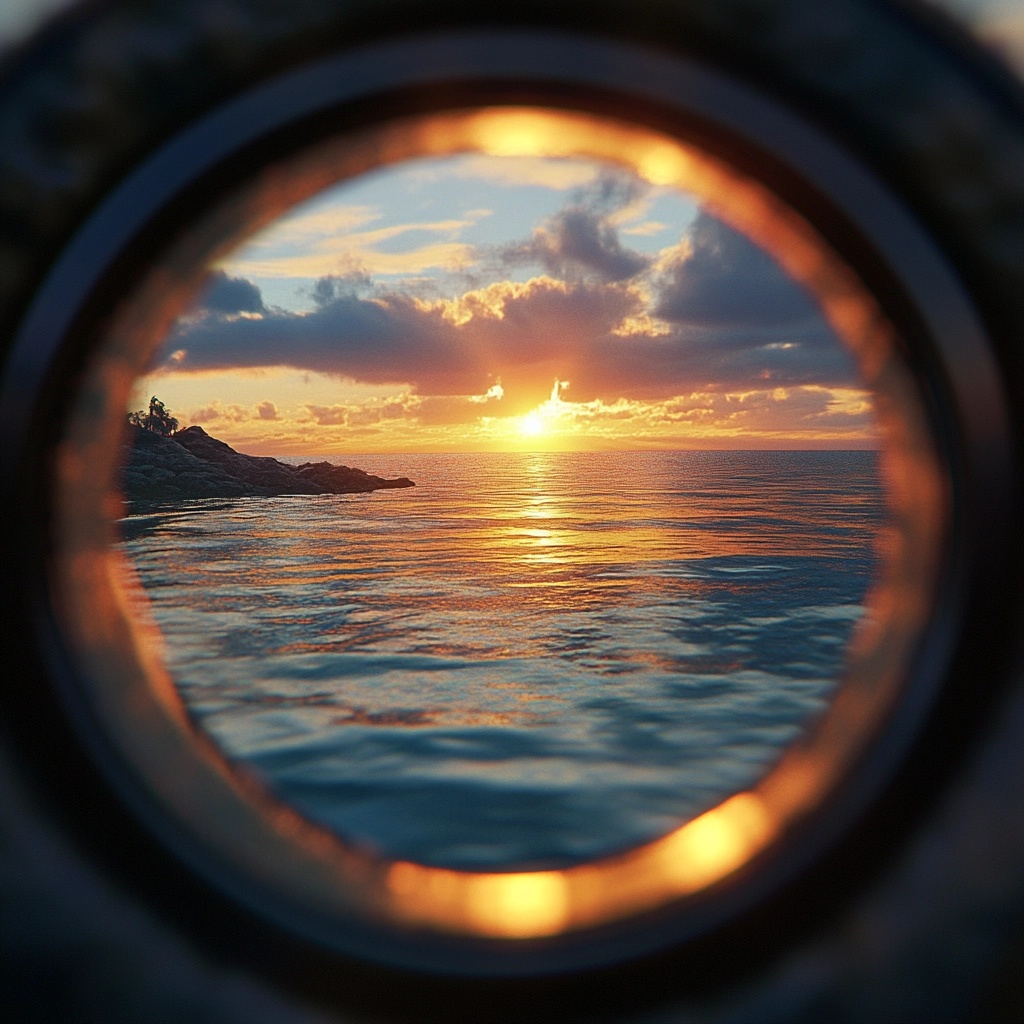
This claim that “The horizon always appears flat, proving Earth is flat” is really a bit silly:
- Curvature visibility: The Earth’s curvature is not easily visible from ground level due to its large size. You need to be at a higher altitude to clearly see the curve.
- Limited field of view: The human eye’s field of view is too narrow to perceive the subtle curve of the horizon from ground level.
- High-altitude observations: From high altitudes (aircraft, high buildings, mountains), the curvature becomes visible.
- Photographic evidence: Wide-angle photos and videos from high altitudes clearly show the curved horizon.
- Optical illusion: The apparent flatness is an optical illusion due to our perspective on a very large sphere.
- Ship disappearance: Ships disappear bottom-first as they sail away, which only happens on a curved surface.
- Varying horizon distance: The distance to the horizon changes with observer height, consistent with a spherical Earth.
- Ancient observations: Even ancient Greeks like Aristotle noted that the Earth’s shadow on the moon during lunar eclipses was always round, indicating a spherical Earth.
- Modern technology: Satellite imagery and space station footage consistently show a curved Earth.
- Scientific consensus: The spherical Earth model is supported by countless scientific observations and measurements.
- Inconsistent with other observations: A flat horizon doesn’t explain other phenomena like time zones, seasons, or gravity.
In conclusion, while the horizon may appear flat from ground level, this is due to the Earth’s large size relative to our perspective, not because the Earth is actually flat. Numerous observations and scientific principles confirm the Earth’s spherical shape.
Lunar eclipses are caused by an invisible “shadow object,” not Earth’s shadow

This claim that “Lunar eclipses are caused by an invisible ‘shadow object,’ not Earth’s shadow”. It’s a good job that it’s invisable as this would be a major issue for Globers to debunk:
- Scientific explanation: Lunar eclipses are well understood and occur when the Earth passes between the Sun and the Moon, casting its shadow on the Moon. This is supported by extensive astronomical observations and calculations.
- Predictability: Lunar eclipses can be predicted with extreme accuracy years in advance. This precision is possible because we understand the orbits of the Earth and Moon, and how they interact with sunlight.
- Shape of the shadow: The shadow seen on the Moon during a lunar eclipse is always circular, consistent with being cast by a spherical Earth. An “invisible shadow object” would need to be perfectly aligned and spherical to produce this effect consistently.
- Gradual progression: The progression of a lunar eclipse, with the Earth’s shadow slowly moving across the Moon’s surface, is consistent with the relative motions of the Earth and Moon.
- Color changes: The reddish color of the Moon during a total lunar eclipse (often called a “blood moon”) is caused by Earth’s atmosphere refracting sunlight onto the Moon. This effect is consistent with Earth casting the shadow, not an invisible object.
- Simultaneous observation: Lunar eclipses can be seen from anywhere on the night side of Earth at the same time, which is consistent with Earth itself casting the shadow.
- Correlation with Earth’s position: Lunar eclipses only occur at full moon, when the Earth is between the Sun and Moon. This timing is consistent with Earth casting the shadow.
- No evidence of “shadow object”: There is no scientific evidence for the existence of a large, invisible object capable of causing lunar eclipses.
- Historical understanding: The mechanism of lunar eclipses has been understood since ancient times, with early astronomers like Aristotle correctly deducing that the Earth’s shadow was responsible.
- Space observations: Astronauts and satellites in space have observed lunar eclipses and confirmed that they are caused by Earth’s shadow.
The idea of an invisible “shadow object” causing lunar eclipses is not supported by any scientific evidence and contradicts our well-established understanding of celestial mechanics and optics. Lunar eclipses are definitively caused by Earth’s shadow falling on the Moon.
The Coriolis effect is a myth; it doesn’t affect toilet flushes or bullet trajectories
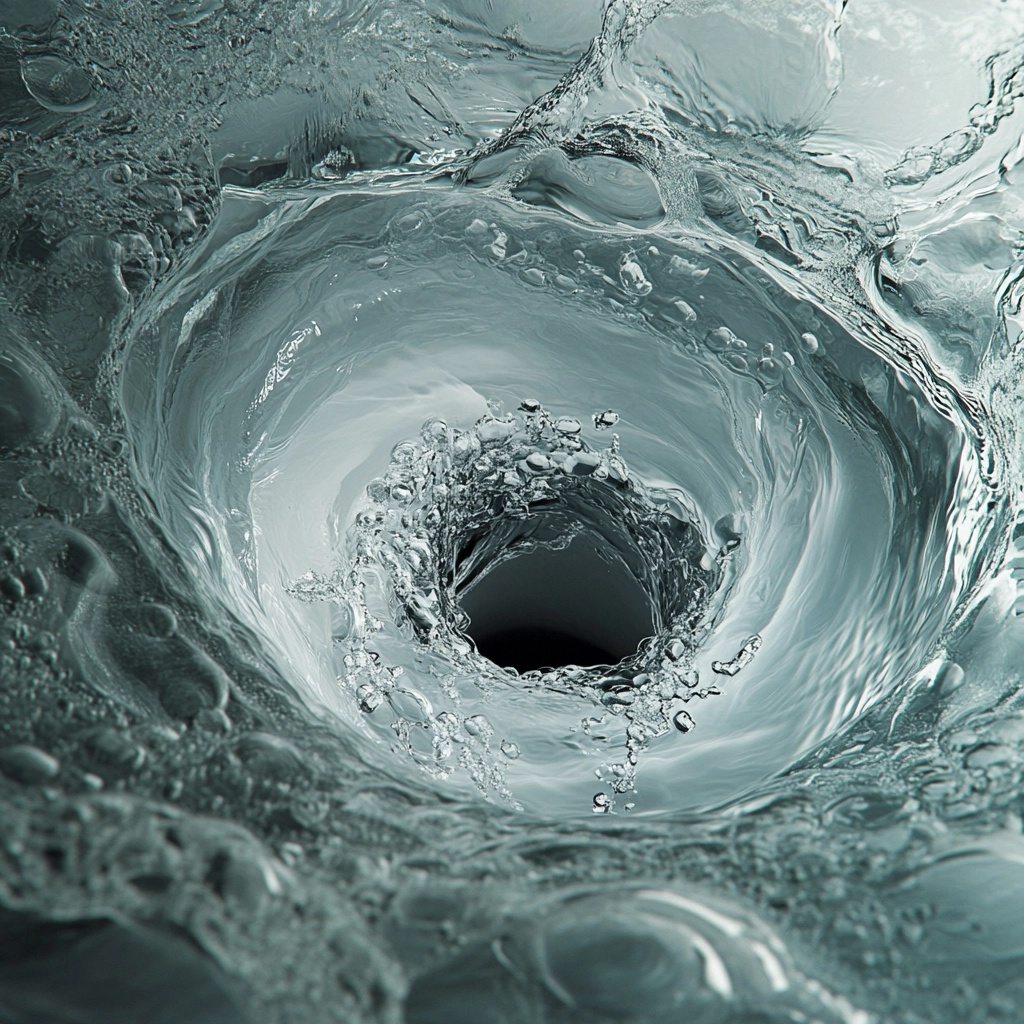
The claim that “the Coriolis effect is a myth; it doesn’t affect toilet flushes or bullet trajectories” can be debunked through the following points:
- Understanding the Coriolis Effect: The Coriolis effect is a result of the Earth’s rotation, causing moving objects (like air and water) to be deflected to the right in the Northern Hemisphere and to the left in the Southern Hemisphere. This effect is well-documented in physics and meteorology.
- Scale Matters: While the Coriolis effect does influence large-scale phenomena like weather patterns and ocean currents, its impact on smaller systems, such as toilet flushes, is negligible. The design of toilets and plumbing systems has a more significant effect on the direction of water flow than the Coriolis effect.
- Toilet Flushes: The direction of water swirling down a toilet is primarily determined by the design of the toilet bowl and the angle at which water enters it. In practice, toilets can flush in either direction regardless of whether they are in the Northern or Southern Hemisphere.
- Bullet Trajectories: The Coriolis effect does influence long-range projectiles, such as bullets or artillery shells, but only over significant distances. For example, snipers must account for this effect when shooting at targets over several hundred meters away. The deflection caused by Earth’s rotation can be several inches at long distances.
- Scientific Evidence: Numerous studies have demonstrated the Coriolis effect in various contexts, from meteorological phenomena like hurricanes to ocean currents. It’s a fundamental principle in fluid dynamics.
- Practical Applications: The Coriolis effect is taken into account in various fields, including aviation and artillery calculations, where precise trajectories are crucial.
- Misunderstanding of Scale: Many misconceptions arise from misunderstanding how scale affects physical phenomena. The Coriolis effect is more pronounced in larger systems (like weather patterns) than in small-scale systems (like toilets or short-range projectiles).
- Experiments and Observations: Experiments have shown that if water is allowed to drain freely in a large basin, it will exhibit a rotational pattern consistent with the Coriolis effect, although this is not easily observable in smaller systems.
While it’s true that the Coriolis effect has minimal impact on small-scale phenomena like toilet flushes, it is not a myth. It plays a significant role in larger systems and is an essential concept in understanding fluid dynamics and Earth sciences.
Stars are fixed lights on a dome above Earth

This claim that “Stars are fixed lights on a dome above Earth” is one often touted by the flat earthers:
- Stellar parallax: Astronomers can measure the tiny shift in position of nearby stars relative to more distant stars as Earth orbits the Sun. This parallax effect would not be possible if stars were fixed on a dome.
- Proper motion: Over long periods, stars are observed to change their positions relative to other stars. This motion has been precisely measured and is inconsistent with fixed lights.
- Variable stars: Many stars change in brightness over time, some regularly and some irregularly. This behavior is inconsistent with fixed lights.
- Stellar spectra: Spectroscopic analysis of starlight reveals complex patterns that match our understanding of stellar physics. These spectra are far more complex than what would be expected from simple fixed lights.
- Stellar distances: We can measure the distances to stars using various methods (parallax, brightness, spectral analysis). These measurements show stars at vastly different distances, incompatible with a dome.
- Supernovae: We observe stars exploding as supernovae, which wouldn’t be possible if they were fixed lights.
- Binary stars: We can observe and measure the orbits of binary star systems, which wouldn’t be possible with fixed lights.
- Deep space objects: We can observe galaxies, nebulae, and other deep space objects far beyond any hypothetical dome.
- Space exploration: Spacecraft have traveled beyond any possible dome and continue to send back data consistent with our understanding of stars as distant suns.
- Stellar evolution: We observe stars in various stages of their life cycles, from formation to death, which is inconsistent with fixed lights.
In conclusion, the idea of stars as fixed lights on a dome is completely incompatible with centuries of astronomical observations and our modern understanding of the universe.
Circumnavigation of Earth is actually traveling in a circle on a flat plane

The idea that circumnavigation of Earth is actually just traveling in a circle on a flat plane is a common claim among flat Earth believers. This theory attempts to reconcile the well-documented fact that people have traveled around the world with the belief in a flat Earth. However, this explanation falls apart under scrutiny and contradicts numerous observable phenomena.
To debunk this claim I for one have literally sailed around the Earth and can say that unless were living in a simulation, it is entirely possible to sail 28,000 miles visiting all the countries and continents and end up where you started:
- Flight paths: Modern air travel routes often cross polar regions, which wouldn’t be possible on a flat Earth model.
- Time zones: The existence of time zones aligns with a spherical Earth rotating on its axis, not a flat plane.
- Satellite navigation: GPS systems, which rely on satellites orbiting a spherical Earth, work consistently across the globe.
- Varying celestial views: Different stars are visible from different hemispheres, which is only possible on a spherical Earth.
- Gravity consistency: The consistent downward pull of gravity everywhere on Earth is explained by a spherical planet, not a flat disc.
- Lunar eclipses: The round shadow of Earth on the moon during lunar eclipses indicates a spherical planet.
- Coriolis effect: This phenomenon, which affects weather patterns and long-range projectiles, only makes sense on a rotating sphere.
- Foucault pendulum: This device demonstrates Earth’s rotation, which is incompatible with a flat Earth model.
- Varying day lengths: The significant differences in daylight hours between equatorial and polar regions throughout the year are consistent with a tilted, spherical Earth orbiting the sun.
- Ocean currents: Global patterns of ocean currents are explained by Earth’s rotation and shape, which wouldn’t occur on a flat plane.
In conclusion, the claim that circumnavigation is simply traveling in a circle on a flat plane fails to account for a wide range of observable phenomena and contradicts well-established scientific principles. The evidence overwhelmingly supports the reality of Earth as a spherical planet, making long-distance travel and navigation possible in ways that simply wouldn’t work on a flat Earth.
The Sun and Moon are small, local objects circling above the flat Earth
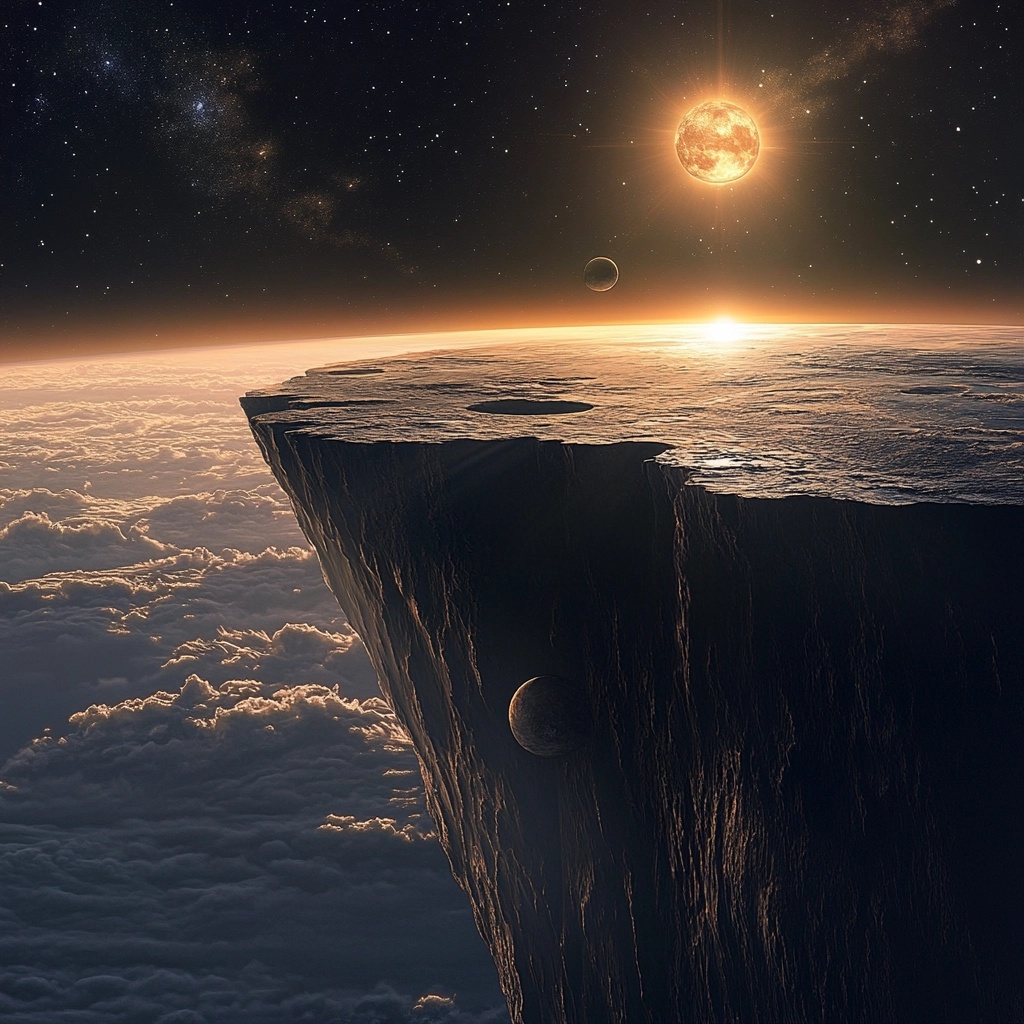
This flat Earth theory about the Sun and Moon fails to account for numerous observable phenomena and contradicts well-established scientific principles:
- Size and distance measurements: Astronomers have accurately measured the sizes and distances of the Sun and Moon. The Sun is about 400 times larger than the Moon and 400 times farther away, which is why they appear similar in size from Earth.
- Lunar phases: The phases of the Moon are caused by its orbit around Earth and its position relative to the Sun. This wouldn’t work with small, local objects circling above a flat plane.
- Solar and lunar eclipses: These events occur when the Sun, Moon, and Earth align in specific ways. The observed patterns of eclipses are consistent with a spherical Earth orbiting the Sun, with the Moon orbiting Earth.
- Gravity: The Sun’s immense gravitational pull keeps Earth and other planets in orbit. A small, local Sun wouldn’t have sufficient mass to explain observed gravitational effects.
- Stellar parallax: We can measure the tiny shifts in star positions as Earth orbits the Sun, which wouldn’t be possible with a stationary flat Earth and local Sun.
- Time zones and seasons: The observed patterns of day and night, as well as seasonal changes, are explained by a rotating, tilted Earth orbiting the Sun. A local Sun circling above a flat Earth can’t account for these phenomena.
- Space exploration: Numerous space missions have provided direct evidence of the Sun and Moon’s sizes and distances, as well as Earth’s spherical shape.
- Solar physics: Our understanding of how the Sun generates energy through nuclear fusion requires it to be the massive object we observe, not a small local light.
So, the idea of small, local Sun and Moon objects circling above a flat Earth is incompatible with a vast array of scientific observations and physical laws. The evidence overwhelmingly supports the model of a spherical Earth orbiting a large, distant Sun, with the Moon orbiting Earth.
Time zones are explained by the Sun acting as a spotlight over different areas
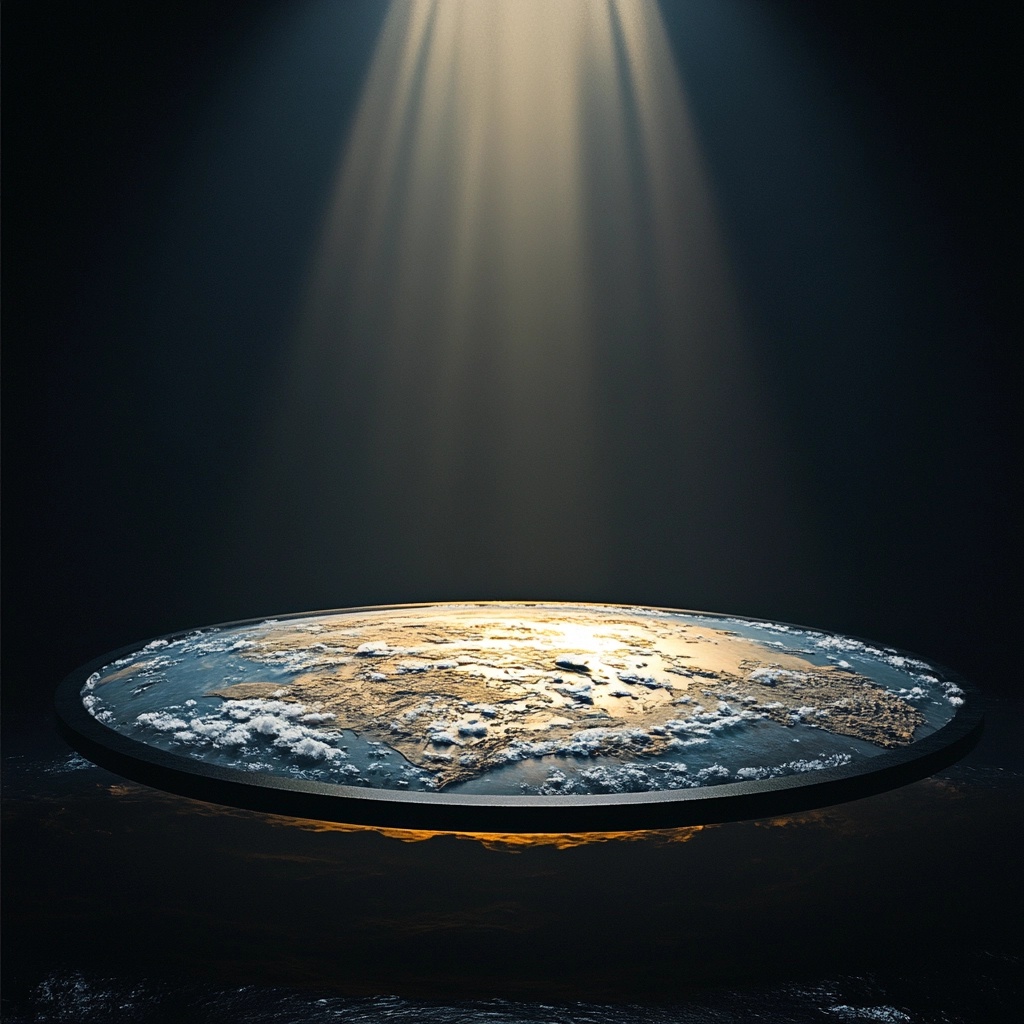
The idea that time zones can be explained by the Sun acting as a spotlight over different areas of a flat Earth is a common claim among flat Earth believers. This theory attempts to reconcile the observable phenomenon of different times in different parts of the world with the belief in a flat Earth. However, this explanation falls apart under scrutiny and contradicts numerous observable phenomena.
- Global consistency: Time zones follow a consistent pattern around the globe, which aligns with a spherical Earth rotating on its axis, not a flat plane with a spotlight sun.
- Predictability: Sunrise and sunset times can be accurately predicted worldwide based on a spherical Earth model, which wouldn’t be possible with a spotlight sun.
- Simultaneous visibility: During daytime, the sun is visible from all points on the sunlit side of Earth simultaneously, inconsistent with a spotlight effect.
- Gradual transitions: Twilight and dawn demonstrate a gradual transition between day and night, not the sharp cutoff a spotlight would create.
- Seasonal variations: The changing lengths of days and nights throughout the year are explained by Earth’s axial tilt and orbit, not by a moving spotlight.
- Polar phenomena: The midnight sun and polar night experienced in Arctic and Antarctic regions are incompatible with a flat Earth spotlight model.
- Satellite observations: Satellites and space stations observe day and night patterns consistent with a rotating spherical Earth, not a flat plane.
- Solar eclipses: The nature and timing of solar eclipses match predictions based on a spherical Earth orbiting the sun, not a spotlight model.
- International cooperation: The international agreement on time zones and the International Date Line only makes sense with a spherical Earth model.
- Circumnavigation: East-west circumnavigation of the globe, experiencing consistent time changes, supports a spherical Earth, not a flat plane with a spotlight sun.
The spotlight sun theory fails to account for the complex and consistent patterns of day, night, and time zones observed around the world. The evidence overwhelmingly supports the model of a spherical Earth rotating on its axis, creating the time zone patterns we observe. This understanding allows for accurate timekeeping, navigation, and global communication that would be impossible under a flat Earth spotlight model.
Ships disappearing over the horizon is due to perspective, not curvature

Flat Earth proponents often claim that ships disappearing over the horizon is merely an effect of perspective, not evidence of Earth’s curvature. Let’s examine why this explanation falls flat:
- Bottom-up disappearance: Ships consistently disappear from the bottom up as they sail away. If perspective were the cause, the entire ship would shrink uniformly.
- Reappearance with zoom: While zooming in can reveal a ship that’s too small to see with the naked eye, no amount of magnification can bring back a ship that’s truly behind the horizon.
- Consistent horizon distance: The distance to the horizon remains constant regardless of magnification, which wouldn’t be the case if it were a matter of perspective.
- Varying disappearance rates: Different parts of a ship vanish at different rates, with the hull going first, then the superstructure, and finally the mast. This is consistent with a curved surface, not perspective.
- Observations from elevation: Viewing from a higher vantage point allows you to see ships that are invisible from sea level, which aligns with a curved Earth model.
- Celestial navigation: The techniques used in maritime navigation rely on Earth’s curvature and wouldn’t work on a flat plane.
- Reverse phenomenon: Ships approaching from beyond the horizon appear top-first, which perspective alone cannot explain.
- Consistency across oceans: This effect is observed uniformly across all large bodies of water worldwide, indicating a global phenomenon rather than a localized optical effect.
While perspective does play a role in how we perceive distant objects, it cannot account for the specific way ships disappear over the horizon. The observed phenomena align perfectly with what we’d expect to see on a spherical Earth, and continue to serve as compelling evidence for our planet’s curvature.
The Bedford Level Experiment proves water is always flat, not curved

The Bedford Level Experiment was a series of observations conducted along a 6-mile (10 km) stretch of the Old Bedford River in Norfolk, England, during the 19th and early 20th centuries. The primary aim of the experiment was to measure the curvature of the Earth. The experiment gained notoriety when Samuel Birley Rowbotham conducted his initial observations in 1838, claiming to have proven that the Earth was flat based on his findings.
Rowbotham used a telescope to observe a boat with a flag on its mast as it rowed away from him along the river. He asserted that he could see the entire boat for the full distance of 6 miles, which he argued was inconsistent with the concept of Earth’s curvature. This claim sparked significant interest and debate regarding the shape of our planet.
However, Rowbotham’s experiment had critical flaws. He did not account for atmospheric refraction, a phenomenon where light bends as it passes through different layers of air, which can create the illusion of flatness over short distances. This oversight significantly undermined his conclusions.
In response to Rowbotham’s claims, Alfred Russel Wallace conducted an improved version of the experiment in 1870. Wallace raised his observation points to 13 feet above the water to minimize refraction effects and added a pole with two discs as reference points. His results showed that the middle disc was above the distant marker, aligning with the expected curvature of a spherical Earth.
Despite Wallace’s improved method and clear results, some flat Earth proponents continued to cite Rowbotham’s original experiment as proof of a flat Earth. This ongoing controversy highlighted the deep-seated beliefs held by some individuals regarding Earth’s shape and showcased how easily scientific evidence can be misinterpreted or selectively presented.
Today, the scientific community universally accepts that when properly conducted, the Bedford Level Experiment confirms Earth’s curvature. The historical significance of this experiment lies in its role as a focal point in debates between flat Earth believers and those who accepted the spherical Earth model.
While outdated as a means of proving Earth’s shape, the Bedford Level Experiment still serves as an important lesson in scientific methodology and highlights how atmospheric refraction can affect observations. It underscores the necessity for rigorous testing and careful consideration of all variables in scientific inquiry.
The Bedford Level Experiment, while historically significant, does not actually prove that water is always flat. In fact, when conducted properly, it demonstrates the curvature of the Earth. Here’s why:
- Original flawed experiment: The original experiment by Samuel Rowbotham in 1838 appeared to show that water was flat over 6 miles. However, this experiment was fundamentally flawed due to not accounting for atmospheric refraction.
- Wallace’s improved method: In 1870, Alfred Russel Wallace conducted an improved version of the experiment that did show curvature:
- He raised the observation points to 13 feet above water to reduce refraction effects.
- He added a pole with two discs in the middle as a reference point.
- His results clearly showed the middle disc above the distant marker, consistent with Earth’s curvature.
- Atmospheric refraction: The biggest issue with the original experiment was failing to account for atmospheric refraction, which can bend light and create the illusion of flatness over short distances.
- Repeatable results: Subsequent repetitions of the experiment using Wallace’s improved method have consistently shown results matching the expected curvature of the Earth.
- Modern verification: Modern surveying techniques and laser measurements have confirmed the curvature of water over long distances.
- Scientific consensus: The scientific community universally accepts that the Earth is spherical and that large bodies of water conform to this curvature.
- Misinterpretation: Flat Earth proponents often misinterpret or selectively present results from the Bedford Level Experiment, ignoring the more rigorous later versions.
In conclusion, while the original Bedford Level Experiment appeared to show flat water, this was due to experimental error. Properly conducted versions of the experiment actually confirm the Earth’s curvature, aligning with all other scientific evidence about the shape of our planet.
Space travel is impossible; the Van Allen radiation belts prevent it

The Van Allen radiation belts are zones of energetic charged particles that surround Earth, trapped by the planet’s magnetic field. Typically consisting of two main belts – an inner and an outer belt – they were discovered in 1958 by James Van Allen using data from the Explorer 1 satellite. The inner belt, extending from about 1,000 to 6,000 km above Earth’s surface, contains mostly protons, while the outer belt, ranging from about 13,000 to 60,000 km, is primarily composed of electrons. These particles originate mainly from the solar wind and cosmic rays. The Van Allen belts are significant in space exploration as they pose potential hazards for satellites and spacecraft due to their high radiation levels. When astronauts travel beyond Earth orbit, they must pass through these belts, but careful planning and shielding mitigate the risks. The belts’ intensity can vary with solar activity, adding complexity to space mission planning. Despite the challenges they present, numerous space missions have successfully navigated through the Van Allen belts, demonstrating that while they are a consideration in space travel, they are not an insurmountable barrier.
The Van Allen radiation belts do pose challenges for space travel, but they are not an insurmountable barrier. Here’s why:
- Successful missions: Numerous space missions, including the Apollo lunar missions, have successfully passed through the Van Allen belts. The first crewed mission to do so was Apollo 8 in 1968.
- Limited exposure time: Spacecraft can be designed to pass through the belts quickly, minimizing radiation exposure. The Apollo missions, for example, took a trajectory that passed through thinner areas of the belts and spent only about 90 minutes in the most intense regions.
- Shielding: Spacecraft can be equipped with radiation shielding to protect both equipment and astronauts. Modern materials and designs have improved shielding capabilities.
- Radiation levels: While radiation in the Van Allen belts is higher than on Earth’s surface, it’s not instantly lethal. The total radiation dose received during a quick pass through the belts is manageable.
- Varying intensity: The belts’ intensity varies with solar activity and location. There are regions of lower intensity that can be targeted for safer passage.
- Scientific understanding: Since their discovery in 1958, our understanding of the Van Allen belts has greatly improved. This knowledge allows for better mission planning and protection strategies.
- Ongoing research: NASA’s Van Allen Probes mission (2012-2019) provided detailed data on the belts, further improving our ability to navigate them safely.
- International Space Station: While the ISS orbits below the Van Allen belts, it still passes through areas of increased radiation, demonstrating that humans can work in space for extended periods with proper protection.
- Deep space missions: Probes like Voyager 1 and 2 have traveled far beyond the Van Allen belts, proving that spacecraft can function beyond this region.
- Future planning: Space agencies continue to develop strategies for safer passage through high-radiation environments, including the Van Allen belts, in preparation for future deep space missions.
While the Van Allen radiation belts present challenges for space travel, they are not an absolute barrier. With proper planning, shielding, and trajectory choices, spacecraft and humans can safely pass through these regions, as demonstrated by numerous successful missions over the past six decades.
Earthquakes are caused by the flat Earth “wobbling” on its foundation

The idea that earthquakes are caused by a flat Earth wobbling on its foundation is a creative attempt to explain a complex natural phenomenon within the flat Earth framework. However, this explanation crumbles under the weight of scientific evidence and observation. Let’s explore why this theory doesn’t hold up:
- Plate tectonics: Earthquakes are well-explained by the movement of tectonic plates, which are large sections of Earth’s crust that float on the semi-fluid mantle beneath.
- Seismic waves: The behavior of seismic waves during earthquakes is consistent with a spherical Earth model and incompatible with a flat Earth.
- Earthquake depth: Earthquakes occur at various depths, some over 400 miles deep, which wouldn’t be possible on a flat Earth with a “foundation.”
- Global distribution: The pattern of earthquake occurrence around the world aligns with plate boundaries and fault lines, not a wobbling motion.
- Predictable patterns: Earthquake patterns and frequencies can be predicted based on geological factors, not random wobbling.
- No observable wobble: If Earth were flat and wobbling, we would observe regular, global disturbances, which we don’t.
- Gravity consistency: The consistent downward pull of gravity everywhere on Earth contradicts the idea of a wobbling flat plane.
- Volcanic activity: The connection between earthquakes and volcanic activity is explained by plate tectonics, not a wobbling flat Earth.
- Ocean floor spreading: The process of ocean floor spreading, which is linked to earthquakes, is incompatible with a flat Earth model.
- Earthquake engineering: Building designs that withstand earthquakes are based on our understanding of seismic waves in a spherical Earth.
While the flat Earth wobble theory might seem to offer a simple explanation for earthquakes, it fails to account for the vast body of geological evidence and observations. The reality of plate tectonics and the behavior of seismic waves provide a much more comprehensive and scientifically sound explanation for the Earth’s seismic activity. As we continue to study and understand our planet, it becomes increasingly clear that its spherical nature is fundamental to the geological processes we observe, including earthquakes.
The United Nations logo is actually the true map of the flat Earth

This claim about the United Nations logo being a “true map of the flat Earth” is false. Here’s a debunking of this theory:
- Map projection: The UN logo uses an azimuthal equidistant projection centered on the North Pole. This is a valid map projection of the spherical Earth, not a flat Earth model.
- Purpose of the logo: The UN chose this projection to represent all countries equally without favoring any particular region, not to depict a flat Earth.
- Historical context: The logo was designed in 1945, long before modern flat Earth theories gained traction.
- Distortion: Like all map projections of a sphere onto a flat surface, this projection involves distortion, especially in the southern hemisphere. A true flat Earth map wouldn’t have such distortions.
- Antarctica: The UN logo doesn’t show Antarctica as a ring around the edge, which many flat Earth models propose. The logo simply doesn’t extend to the South Pole.
- Other international logos: Many other international organizations use globes in their logos, contradicting the idea that official bodies secretly believe in a flat Earth.
- Scientific consensus: The spherical nature of Earth is supported by overwhelming scientific evidence and direct observation, including images from space.
- Misinterpretation: Flat Earth proponents have misinterpreted the use of this projection, ignoring its practical purpose in favor of a conspiracy theory.
In conclusion, the UN logo is simply a specific map projection chosen for its ability to represent all nations, not a hidden message about Earth’s shape. It’s a misinterpretation to claim it as evidence for a flat Earth.










